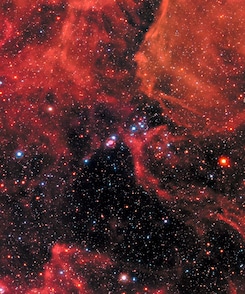Telescope
- All
- News
- Videos
- Web Stories
-

This New Telescope Can Negate 'False-Positives' Of Alien Life Within Hours
- Friday April 4, 2025
- Science | Edited by Abhinav Singh
The ELT could identify biosignatures on planets in our solar system as well as orbiting Proxima Centauri within hours.
-
 www.ndtv.com
www.ndtv.com
-

NASA’s SPHEREx Mission Sends First Space Images Before Full Sky Survey
- Thursday April 3, 2025
- Written by Gadgets 360 Staff
NASA’s SPHEREx telescope has captured its first images from space, marking a critical milestone before its full-sky infrared survey begins. The observatory, launched on March 11, recorded thousands of light sources, including distant galaxies and stars. Unlike other space telescopes, SPHEREx is designed for large-scale cosmic mapping, scanning th...
-
 www.gadgets360.com
www.gadgets360.com
-

JWST Captures Unseen Details of Exoplanets in HR 8799 and 51 Eridani Systems
- Thursday April 3, 2025
- Written by Gadgets 360 Staff
The James Webb Space Telescope (JWST) has captured groundbreaking images of exoplanets in the HR 8799 and 51 Eridani systems. By modifying its coronagraphs, astronomers allowed more starlight to pass through, revealing clearer planetary details. The study, published in The Astrophysical Journal Letters, highlights the first successful detection of ...
-
 www.gadgets360.com
www.gadgets360.com
-

James Webb Space Telescope Reveals a Stunning Einstein Ring in Hydrus
- Wednesday April 2, 2025
- NDTV
A striking new image from the James Webb Space Telescope reveals an Einstein ring in the Hydrus constellation. The phenomenon occurs when a massive foreground galaxy bends light from a hidden background galaxy, forming a near-perfect ring. This effect, predicted by Einstein’s theory of general relativity, helps astronomers study galaxies from the...
-
 www.gadgets360.com
www.gadgets360.com
-

Space Telescope Gaia Sent Into 'Retirement' But Legacy Endures
- Friday March 28, 2025
- World News | Agence France-Presse
Europe's Gaia space telescope was powered down and sent into "retirement" on Thursday after a decade revealing the secrets of the Milky Way, but its observations will fuel discoveries for decades to come.
-
 www.ndtv.com
www.ndtv.com
-

James Webb Telescope Captures Neptune’s Auroras in Stunning Detail
- Monday March 31, 2025
- Written by Gadgets 360 Staff
The James Webb Space Telescope has provided the first-ever direct images of Neptune’s auroras, revealing surprising details about the ice giant’s atmosphere. Unlike auroras on Earth, Jupiter, or Saturn, Neptune’s auroras appear across unexpected locations due to its tilted and offset magnetic field. Scientists also detected the presence of H...
-
 www.gadgets360.com
www.gadgets360.com
-

Astronomers "Astonished" After Oxygen Detected In Most Distant Galaxy
- Thursday March 20, 2025
- World News | Agence France-Presse
Oxygen has been detected in the most distant galaxy ever discovered, surprised astronomers said Thursday, offering further evidence that stars in the early universe matured far quicker than had been thought possible.
-
 www.ndtv.com
www.ndtv.com
-

ESA’s Euclid Telescope Releases First Data, Mapping 26 Million Galaxies
- Wednesday March 26, 2025
- Written by Gadgets 360 Staff
ESA’s Euclid telescope has released its first dataset, mapping 26 million galaxies within a week. The observations include deep-field images, a survey of 380,000 galaxies, and 500 new gravitational lens candidates. Scientists will continue tracking cosmic evolution over six years. The dataset, currently 35 terabytes, is expected to grow to 2 peta...
-
 www.gadgets360.com
www.gadgets360.com
-

Alien Life May Survive on Planets Orbiting White Dwarfs, Study Finds
- Wednesday March 26, 2025
- Written by Gadgets 360 Staff
New research explores the possibility of alien life on planets orbiting white dwarfs. While these stellar remnants cool over time, their shrinking habitable zones may still allow biological processes like photosynthesis and UV-driven abiogenesis to occur. A model assessing a planet's energy reception over seven billion years indicates that life-sus...
-
 www.gadgets360.com
www.gadgets360.com
-

What Is Dark Energy? The Mystery Behind The Expanding Universe
- Thursday March 20, 2025
- World News | Agence France-Presse
Dark energy makes up roughly 70 percent of the universe, yet we know nothing about it. Around 25 percent of the universe is the equally mysterious dark matter, leaving just five percent for everything that we can see and touch.
-
 www.ndtv.com
www.ndtv.com
-

Europe's 'Dark Universe Detective' Telescope, Launched In 2023, Releases 1st Data
- Wednesday March 19, 2025
- World News | Agence France-Presse
The telescope launched in 2023, aiming to chart one third of the sky -- encompassing 1.5 billion galaxies -- to create what has been billed as humanity's most accurate 3D map of the universe.
-
 www.ndtv.com
www.ndtv.com
-

Atacama Telescope Reveals Most Detailed Cosmic Microwave Background Yet
- Thursday March 20, 2025
- Written by Gadgets 360 Staff
New images from the decommissioned Atacama Cosmology Telescope offer the most detailed view of the cosmic microwave background. The data reveals early cosmic structures, tracks primordial gas movement, and refines estimates of the universe’s total mass. While supporting existing models, it does not resolve the Hubble tension. Researchers are now ...
-
 www.gadgets360.com
www.gadgets360.com
-

NASA's Webb Captures First Direct Images Of Carbon Dioxide Outside Solar System
- Tuesday March 18, 2025
- Science | Edited by Ritu Singh
This finding provides compelling evidence that the giant planets in HR 8799 formed through core accretion, a process similar to the formation of Jupiter and Saturn.
-
 www.ndtv.com
www.ndtv.com
-

Hubble Telescope Captures NGC 4536, a Starburst Galaxy with Intense Star Formation
- Wednesday March 26, 2025
- Written by Gadgets 360 Staff
NASA’s Hubble Space Telescope has captured a striking image of NGC 4536, a starburst galaxy 50 million light-years away in the Virgo constellation. The galaxy’s sweeping spiral arms are filled with young blue star clusters and ionized hydrogen gas, indicating rapid star formation. Astronomers believe its bar-like structure channels gas toward t...
-
 www.gadgets360.com
www.gadgets360.com
-

This New Telescope Can Negate 'False-Positives' Of Alien Life Within Hours
- Friday April 4, 2025
- Science | Edited by Abhinav Singh
The ELT could identify biosignatures on planets in our solar system as well as orbiting Proxima Centauri within hours.
-
 www.ndtv.com
www.ndtv.com
-

NASA’s SPHEREx Mission Sends First Space Images Before Full Sky Survey
- Thursday April 3, 2025
- Written by Gadgets 360 Staff
NASA’s SPHEREx telescope has captured its first images from space, marking a critical milestone before its full-sky infrared survey begins. The observatory, launched on March 11, recorded thousands of light sources, including distant galaxies and stars. Unlike other space telescopes, SPHEREx is designed for large-scale cosmic mapping, scanning th...
-
 www.gadgets360.com
www.gadgets360.com
-

JWST Captures Unseen Details of Exoplanets in HR 8799 and 51 Eridani Systems
- Thursday April 3, 2025
- Written by Gadgets 360 Staff
The James Webb Space Telescope (JWST) has captured groundbreaking images of exoplanets in the HR 8799 and 51 Eridani systems. By modifying its coronagraphs, astronomers allowed more starlight to pass through, revealing clearer planetary details. The study, published in The Astrophysical Journal Letters, highlights the first successful detection of ...
-
 www.gadgets360.com
www.gadgets360.com
-

James Webb Space Telescope Reveals a Stunning Einstein Ring in Hydrus
- Wednesday April 2, 2025
- NDTV
A striking new image from the James Webb Space Telescope reveals an Einstein ring in the Hydrus constellation. The phenomenon occurs when a massive foreground galaxy bends light from a hidden background galaxy, forming a near-perfect ring. This effect, predicted by Einstein’s theory of general relativity, helps astronomers study galaxies from the...
-
 www.gadgets360.com
www.gadgets360.com
-

Space Telescope Gaia Sent Into 'Retirement' But Legacy Endures
- Friday March 28, 2025
- World News | Agence France-Presse
Europe's Gaia space telescope was powered down and sent into "retirement" on Thursday after a decade revealing the secrets of the Milky Way, but its observations will fuel discoveries for decades to come.
-
 www.ndtv.com
www.ndtv.com
-

James Webb Telescope Captures Neptune’s Auroras in Stunning Detail
- Monday March 31, 2025
- Written by Gadgets 360 Staff
The James Webb Space Telescope has provided the first-ever direct images of Neptune’s auroras, revealing surprising details about the ice giant’s atmosphere. Unlike auroras on Earth, Jupiter, or Saturn, Neptune’s auroras appear across unexpected locations due to its tilted and offset magnetic field. Scientists also detected the presence of H...
-
 www.gadgets360.com
www.gadgets360.com
-

Astronomers "Astonished" After Oxygen Detected In Most Distant Galaxy
- Thursday March 20, 2025
- World News | Agence France-Presse
Oxygen has been detected in the most distant galaxy ever discovered, surprised astronomers said Thursday, offering further evidence that stars in the early universe matured far quicker than had been thought possible.
-
 www.ndtv.com
www.ndtv.com
-

ESA’s Euclid Telescope Releases First Data, Mapping 26 Million Galaxies
- Wednesday March 26, 2025
- Written by Gadgets 360 Staff
ESA’s Euclid telescope has released its first dataset, mapping 26 million galaxies within a week. The observations include deep-field images, a survey of 380,000 galaxies, and 500 new gravitational lens candidates. Scientists will continue tracking cosmic evolution over six years. The dataset, currently 35 terabytes, is expected to grow to 2 peta...
-
 www.gadgets360.com
www.gadgets360.com
-

Alien Life May Survive on Planets Orbiting White Dwarfs, Study Finds
- Wednesday March 26, 2025
- Written by Gadgets 360 Staff
New research explores the possibility of alien life on planets orbiting white dwarfs. While these stellar remnants cool over time, their shrinking habitable zones may still allow biological processes like photosynthesis and UV-driven abiogenesis to occur. A model assessing a planet's energy reception over seven billion years indicates that life-sus...
-
 www.gadgets360.com
www.gadgets360.com
-

What Is Dark Energy? The Mystery Behind The Expanding Universe
- Thursday March 20, 2025
- World News | Agence France-Presse
Dark energy makes up roughly 70 percent of the universe, yet we know nothing about it. Around 25 percent of the universe is the equally mysterious dark matter, leaving just five percent for everything that we can see and touch.
-
 www.ndtv.com
www.ndtv.com
-

Europe's 'Dark Universe Detective' Telescope, Launched In 2023, Releases 1st Data
- Wednesday March 19, 2025
- World News | Agence France-Presse
The telescope launched in 2023, aiming to chart one third of the sky -- encompassing 1.5 billion galaxies -- to create what has been billed as humanity's most accurate 3D map of the universe.
-
 www.ndtv.com
www.ndtv.com
-

Atacama Telescope Reveals Most Detailed Cosmic Microwave Background Yet
- Thursday March 20, 2025
- Written by Gadgets 360 Staff
New images from the decommissioned Atacama Cosmology Telescope offer the most detailed view of the cosmic microwave background. The data reveals early cosmic structures, tracks primordial gas movement, and refines estimates of the universe’s total mass. While supporting existing models, it does not resolve the Hubble tension. Researchers are now ...
-
 www.gadgets360.com
www.gadgets360.com
-

NASA's Webb Captures First Direct Images Of Carbon Dioxide Outside Solar System
- Tuesday March 18, 2025
- Science | Edited by Ritu Singh
This finding provides compelling evidence that the giant planets in HR 8799 formed through core accretion, a process similar to the formation of Jupiter and Saturn.
-
 www.ndtv.com
www.ndtv.com
-

Hubble Telescope Captures NGC 4536, a Starburst Galaxy with Intense Star Formation
- Wednesday March 26, 2025
- Written by Gadgets 360 Staff
NASA’s Hubble Space Telescope has captured a striking image of NGC 4536, a starburst galaxy 50 million light-years away in the Virgo constellation. The galaxy’s sweeping spiral arms are filled with young blue star clusters and ionized hydrogen gas, indicating rapid star formation. Astronomers believe its bar-like structure channels gas toward t...
-
 www.gadgets360.com
www.gadgets360.com

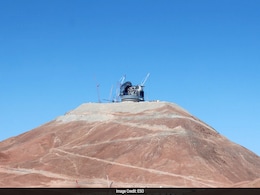






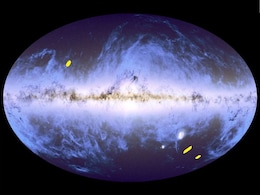



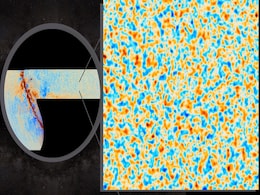







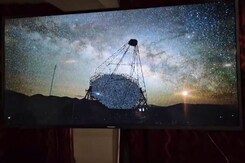
![Gadgets 360 With Technical Guruji: Did You Know? [April 6, 2024] Gadgets 360 With Technical Guruji: Did You Know? [April 6, 2024]](https://c.ndtvimg.com/2024-02/mpconh58_did-you-know_640x480_10_February_24.jpg?downsize=245:163)












